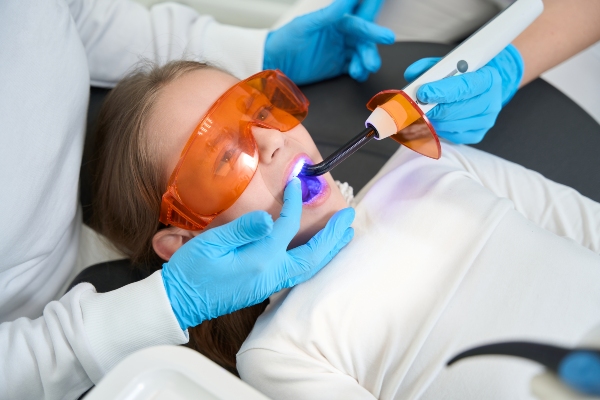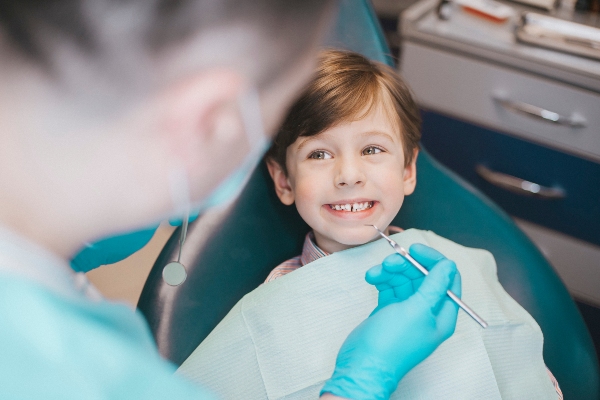Pediatric Dentistry Tips for Treating a Child’s Tooth Pain at Home

A frequent question in pediatric dentistry is how to address tooth pain in children. Is it safe to treat the problem at home? Is it necessary to see a dentist for evaluation? By understanding the possible source of the pain and how to properly treat it, parents can make a more well-informed decision about their child's oral health.
Potential causes of tooth pain
There are several reasons a child may experience oral discomfort. It is important to assess any accompanying behaviors or symptoms to rule out serious problems.
Injury or trauma
A bump to the mouth from a stumble or fall can bring on swelling and soreness that eventually subsides. However, if a tooth is chipped or knocked loose, the child should be evaluated promptly.
Canker sores
Children can sometimes experience canker sores that develop from
- Small cuts or minor soft tissue injuries
- Food sensitivities
- High levels of stress
- An imbalanced diet
While these can be very painful, home treatment is usually effective.
Trapped food particles
When bits of food become lodged between teeth or along the gum line, swelling and bleeding may occur. This often causes pain and sensitivity until the remnants are completely removed.
Cavities
Young children are at a higher risk for tooth decay than adults. In fact, this is one of the most common issues in pediatric dentistry. Cavities tend to develop due to lack of proper brushing and consumption of high-sugar foods and beverages, such as milk, juice and sweets. Tooth decay can be very painful and requires professional treatment.
Infection
Dental pain may be a sign of an oral infection, along with unexplained swelling, oozing or fever. If an infection is suspected, immediate care is required.
Tips for home treatment and care
When a child complains of dental pain, parents can try several solutions to alleviate discomfort. If pain worsens, persists for more than a day or two or is accompanied by a fever, it is time to schedule an appointment with a dentist.
Saltwater rinse
Parents can mix 8 ounces of very hot or boiling water with 1 teaspoon of salt until the granules have fully dissolved. Once the saltwater is cool enough to use but still very warm, children should rinse and spit until the entire cup has been used. This can be repeated every few hours to alleviate pain.
Proper teeth cleaning
Detailed brushing and flossing is a vital component of pediatric dentistry and can dislodge irritating food particles. Parents should perform the cleaning to ensure everything is completely removed. Finish with a thorough rinse to wash away loosened remnants and control any bleeding.
Cold compresses and pain medication
Applying an ice pack to the affected area can help relieve swelling and discomfort. If pain persists, topical or oral medications for children may be helpful. It is important to reference the age requirements and recommended dosages for proper use.
Conclusion
In many situations, parents can effectively treat a child's tooth pain at home using simple approaches. However, if pain persists or is accompanied by signs of infection, a dentist should be seen promptly.
Request an appointment here: https://www.grandparkwaypediatricdental.com or call Grand Parkway Pediatric Dental at (832) 579-0960 for an appointment in our Richmond office.
Check out what others are saying about our services on Yelp: Read our Yelp reviews.
Recent Posts
Dental fillings for kids restore the smile for years to come. Proper aftercare and consistent oral hygiene help to ensure your child gets the most out of their fillings. Thankfully, caring for these restorations is simple and straightforward, particularly with the help of a pediatric dentist.A dental filling is a dental restoration that “fills” cavities…
Dental fillings for kids provide many advantages. It is natural for parents to ensure their children’s comfort. Fillings can improve a decayed tooth’s function and appearance. It can also keep more dental decay at bay. Here are the details on how dental fillings for kids can prevent dental decay from worsening.All parents want their children…
Dental fillings for kids are crucial in preventing many dental issues. Baby teeth can develop cavities. Correcting this problem is important for developing permanent teeth. Here are the details on how preventive dentistry uses dental fillings for kids.Research shows that many school-age kids suffer from cavities. This disease is common even if it is preventable.…
Dental fillings for kids are one of the most common treatments for tooth decay in children. The earlier tooth decay is detected in a child’s tooth, the easier it is to treat. Let us examine why treating childhood tooth decay is crucial and how a pediatric dentist treats it.According to the Centers for Disease Control…


